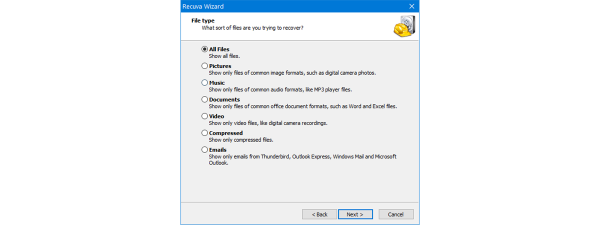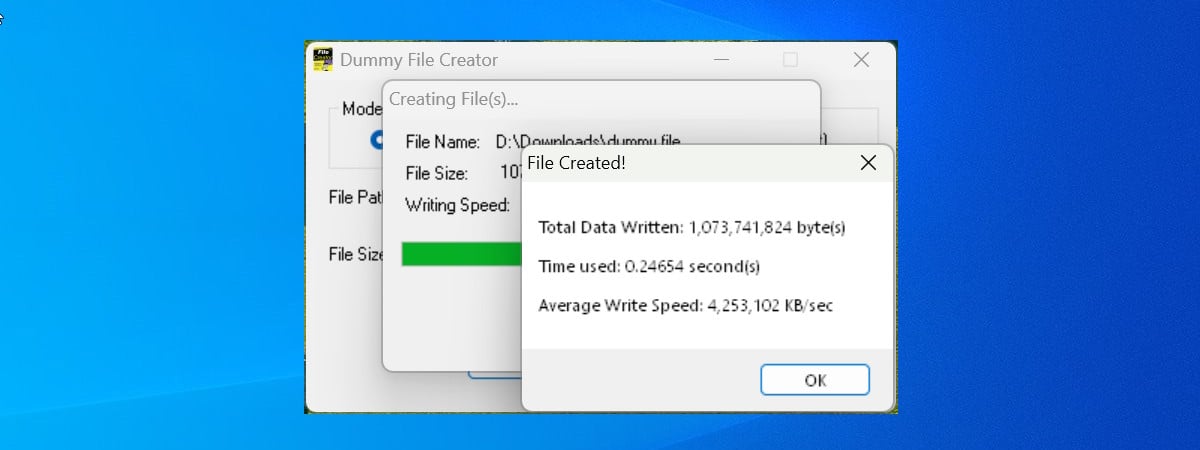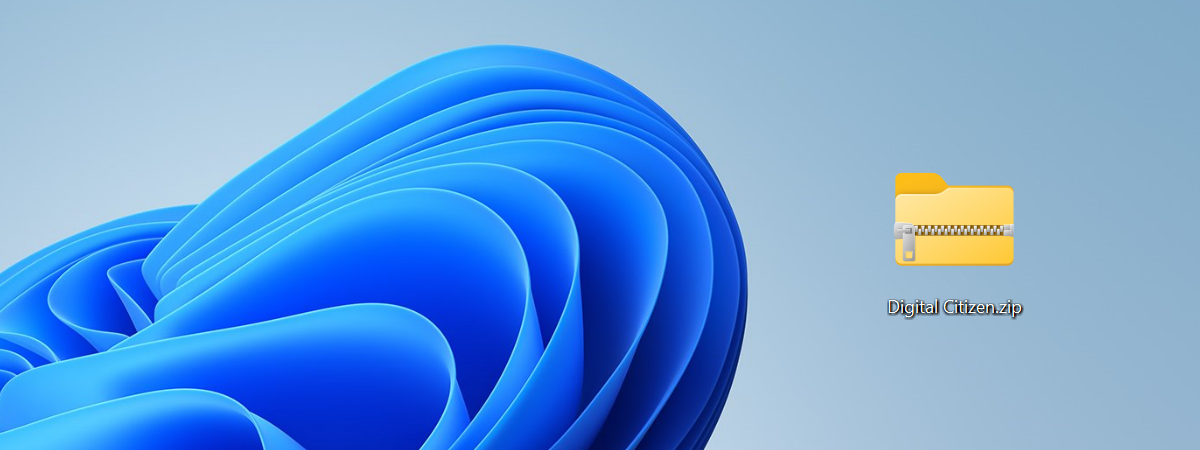
Are you wondering how to zip a file in Windows 10 or Windows 11? While ZIP files have been around since 1989, you had to install a third-party app in Windows to work with files that have the “.zip” extension for the first ten years. However, starting in 1998, Windows included the ability to create a ZIP file as a standard feature. If you want to transfer files or save disk space, ZIP files are the go-to solution because they’re easy to use and available in every Windows system. Let’s find out how to create a ZIP file in Windows 10 and Windows 11:
What is a ZIP file?
A ZIP file is an archive that compresses one or more files and folders to make them more manageable and save storage space. The concept of archiving files by combining them into a single one (which usually takes up less space) was born in the early years of the internet, when PC hard drives were but a fraction of what you get on today’s low-end smartphones and transferring a file was done using dial-up connections, after listening to their oh-so-soothing soundtrack. When you zip a file, you can sometimes reduce its size by a significant amount, which, at the time, was a big deal, saving precious time when transferring files over slow dial-up internet connections. The ZIP file (and the high-performance compression that came with it) also received widespread support because its public specifications allowed anyone to create apps that worked with this file archiving standard.
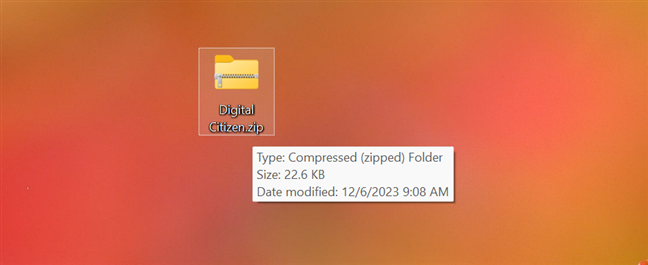
A ZIP file in Windows
Microsoft introduced support for the ZIP format in Windows in 1998. It was initially named “Compressed (zipped) folder” - a name still used in Windows 10 and the old right-click menu from Windows 11. And it does make sense to treat a ZIP file as a folder because it behaves like one: you can copy, move, or delete it, but you can also add or remove files from it.
Although the volumes of data one can transfer on the internet have increased exponentially over the years, compression remains a valid topic because we need to share more and more information. Thankfully, compression techniques are now part of most standard image and video file formats. For example, if you zip a JPEG image file, the result is just as large because JPEG already compresses the image data. On the other hand, when I turned a PDF into a ZIP file, the archive was about 12% smaller than the original document, and an ICO file was reduced to just 5% of its original size when compressed! I could go on, but it’s best to test for yourself to figure out which of your files are worth zipping.
The archiving of files and folders to transfer them or simply conserve space on your hard drive remains a valid reason for using the ZIP format. If you download several files from the Microsoft OneDrive website or several pictures from Google Photos, they are grouped and downloaded in a single ZIP file.
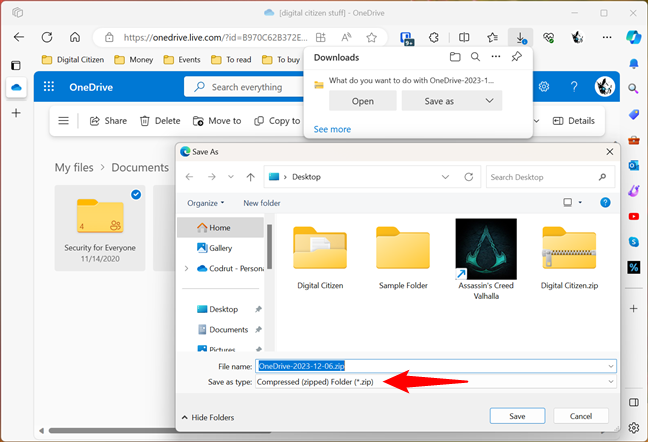
Downloading files from OneDrive as a ZIP file
When you transfer files over email, it’s much easier for both the sender and the receiving party to handle a single ZIP archive that one can attach to the message like any other file. Furthermore, zipping files is a great idea when it comes to your collection of photos, videos, and games: compress any files you don’t open too often to free up storage space without deleting anything.
Now that you know the basics, let’s see how to create a ZIP file in Windows 10 and in Windows 11.
How to zip files in Windows 10
If you want to zip files in Windows 10, you can use the built-in features of File Explorer. Here are the steps to follow:
How to zip a file in Windows 10
To figure out how to zip a folder or a file in Windows 10 as fast as possible, look no further than its right-click menu. To begin, open File Explorer and locate the file or folder you want to archive. Next, right-click or press-and-hold it to access its context menu, click or tap Send to, and select “Compressed (zipped) folder” from the options list.
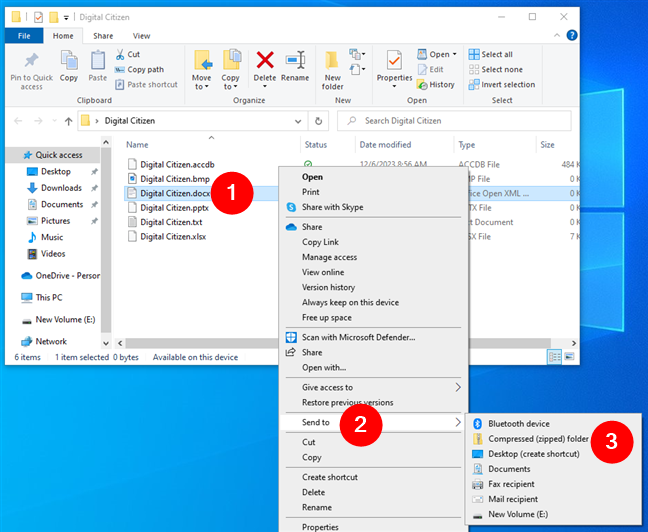
How to zip a file in Windows 10 using the right-click menu
Alternatively, you can use the tools offered in File Explorer to archive files. Select the file you want to zip, access the Share tab from the file manager’s ribbon menu, and click or tap on Zip.
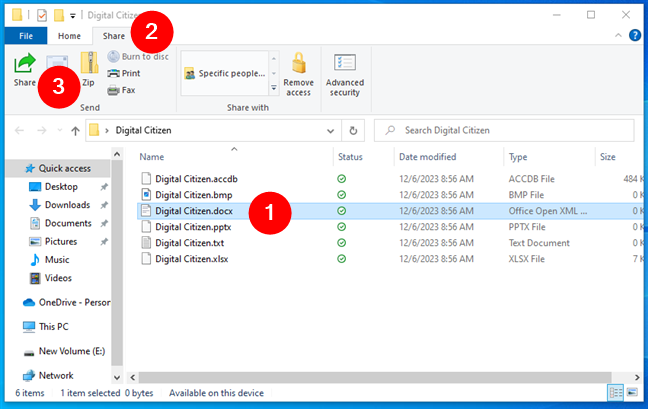
How to create a ZIP file in Windows 10 using File Explorer
Regardless of the method you used, Windows 10 immediately creates the new ZIP file. By default, the suggested name is the one of the original file, but you can type another one instead. When you’re happy with the result, press the Enter key or click/tap anywhere on your screen.
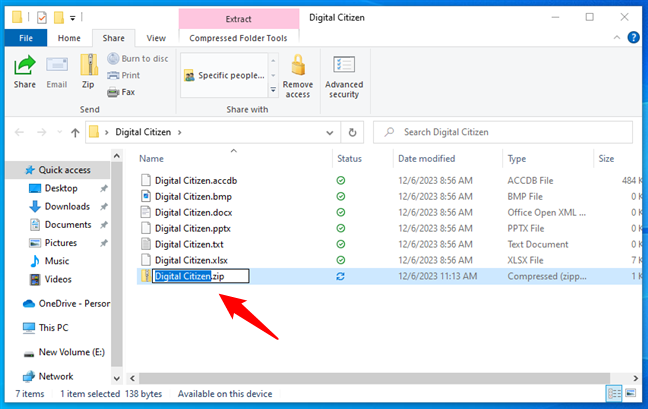
Choose a name for your ZIP file or go with the default one
As you can see in the image above, the new archive uses a zipped folder as its icon and has the ZIP extension.
TIP: Did you know you can also create a password-protected ZIP file in Windows?
How to create a ZIP file with multiple files or folders in Windows 10
If you want to make a ZIP file that contains more than one item, there are two methods. To create it from scratch, select multiple files and/or folders and follow the steps shown in the previous chapter of this guide. Shortly put: select the files and/or folders, right-click on them, and choose Send to > Compressed (zipped) folder.
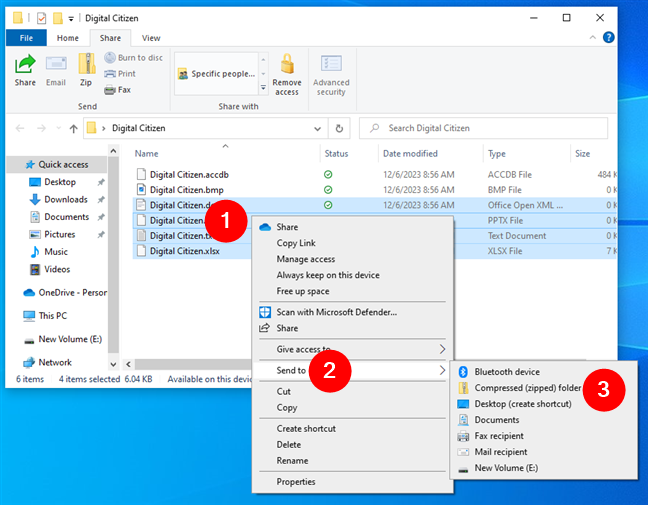
How to zip files in Windows 10
Alternatively, select the items to archive and click/tap the Zip button in the Share tab of File Explorer’s ribbon. However, if you already have your archive and it’s just missing a couple of files, you can just copy and paste them into the ZIP folder. An easy way to do this is by dragging and dropping them onto the archive, like this:
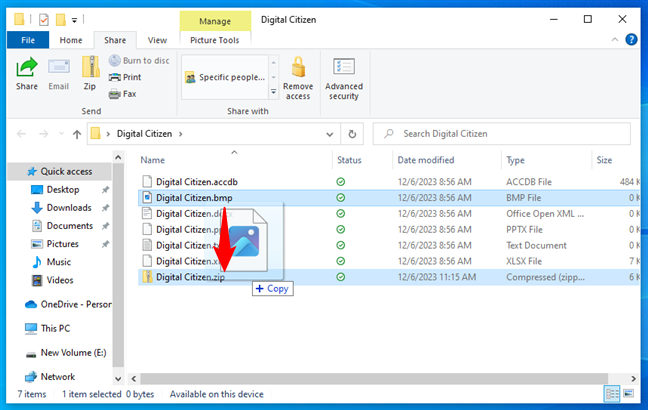
Add more files to a ZIP archive in Windows 10
After you drop them onto the archive, the items are added to the existing ZIP file.
TIP: Now that you know how to zip files, you may be interested to learn more about extracting compressed files in Windows.
How to zip files in Windows 11
If what you want is to zip some files or folders in Windows 11, the operating system offers this option natively. That means that you don’t need third-party tools to do so. Furthermore, somewhere in 2024, Windows 11 will also allow us to compress files using other archive formats such as RAR or 7z, not only ZIP. Until then, here are the steps to zip files in Windows 11:
How to zip a file in Windows 11
The fastest way to zip a file or a folder in Windows 11 is to use the right-click menu. Open File Explorer (Win + E) and find the item you want to zip. Right-click or press and hold on it to see its context menu, and choose “Compress to ZIP file” in the list of options.
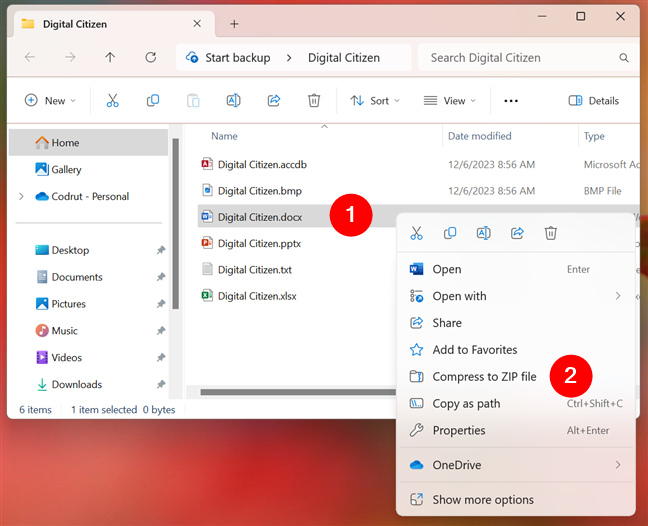
How to make a ZIP file in Windows 11 using the right-click menu
Alternatively, you can also select the file in File Explorer, click or tap the See more (...) button, and select the “Compress to ZIP file” option.
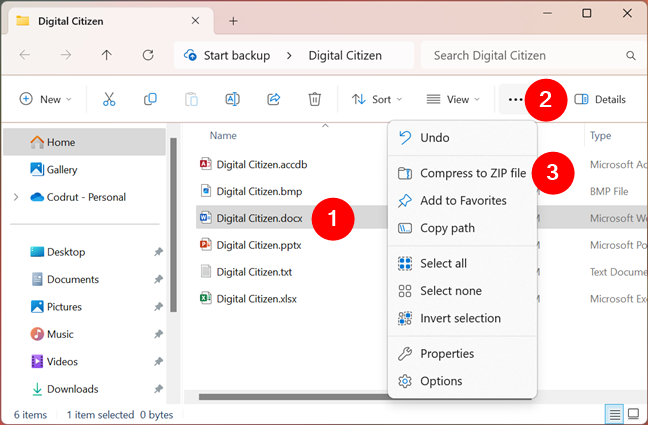
How to create a ZIP file in Windows 11 with File Explorer
Either way, Windows 11 immediately zips your file. Its default name is that of the original uncompressed file, but you can choose another one if you want. Once you do, press Enter on your keyboard or click/tap anywhere on the screen.
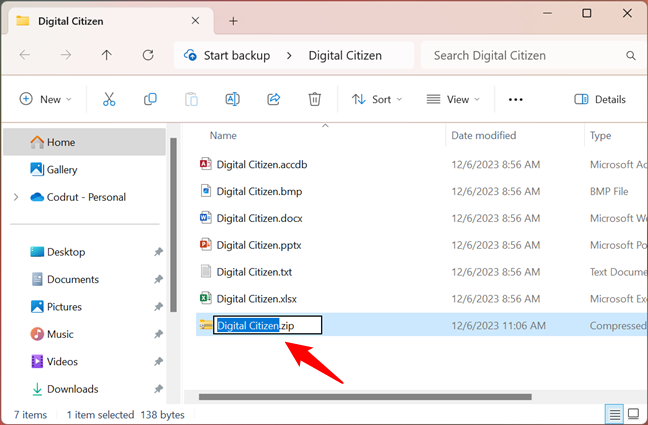
Choose a name for the ZIP file
That’s it! But what if you want to make a ZIP archive with multiple files or folders inside? In that case, here’s…
How to zip multiple files and/or folders in Windows 11
If you want to make a ZIP file that contains two or more items - files or folders - there are two ways to do so. The first one is to create the ZIP file from scratch by following the same instructions I’ve shown you earlier. Select the files/folders, right-click on them, and choose “Compress to ZIP file.”
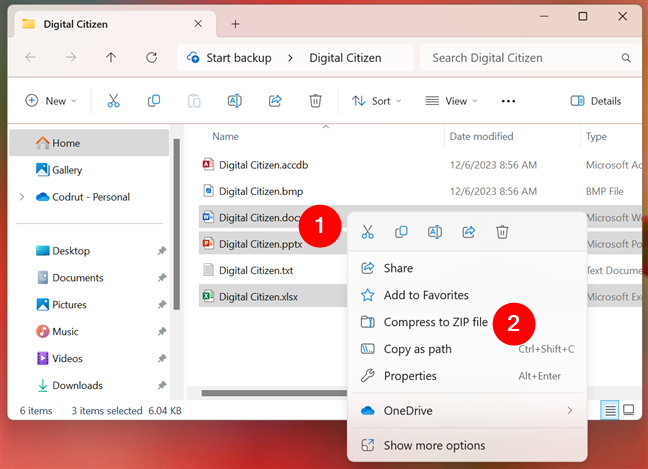
How to zip multiple files in Windows 11
Alternatively, select the items to add to the ZIP folder, open the See more (...) menu in File Explorer, and select “Compress to ZIP file.” However, if you already have a ZIP archive and you just want to add some new files or folders to it, you can drag and drop or copy and paste them into that ZIP folder.
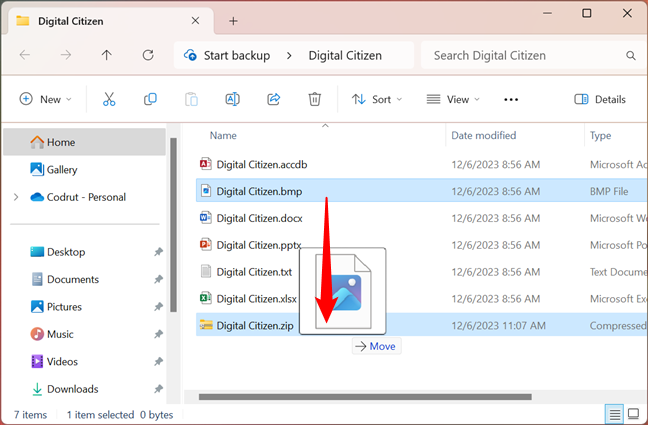
How to add more files to a ZIP folder in Windows 11
The new files/folders are added to the ZIP archive as soon as you drop or paste them inside it.
Why do you want to zip files?
Whether you want to share them or store them for a long time, zipping files helps you considerably reduce their size while also keeping things organized. I use ZIP files mostly when I need to transfer files, but they can also come in handy if you need to free up space on your hard drives. Before you close this guide, I’m curious to know your reasons for learning how to make a ZIP file. Tell me your story in the comments section.


 11.12.2023
11.12.2023 